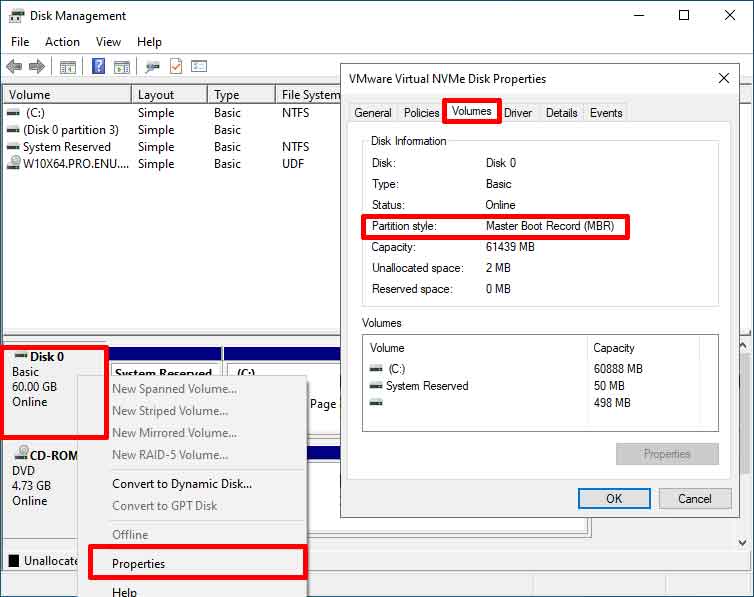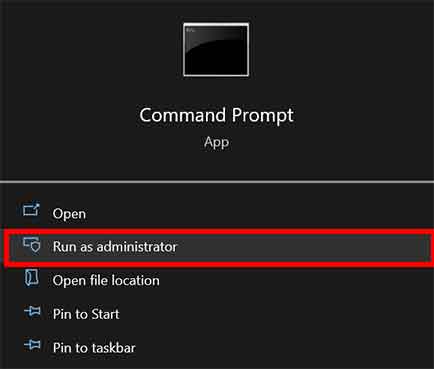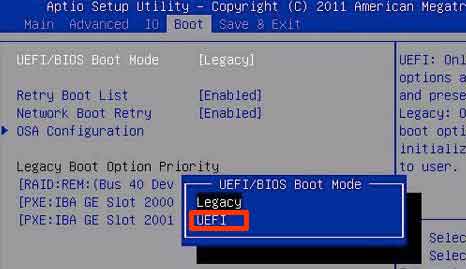1. Check Windows version > 1703
For how to check the Windows version, see How to check the Windows version.
2. Check whether the partition type is using MBR
Open ” Disk Management “, for how to open it you can see on How to create a Windows partition without losing data and without applications.
In “Disk Management”, select Disk 0 (Windows installation disk) and then right-click and select “Properties”. In the “Properties” window, select the “Volumes” tab and look at the “Partition style” what is the MBR.

3. Open Command prompt “CMD” and run as administrator

4. Change MBR to GPT with mbr2gpt.exe
In the CMD window, type the following command:
mbr2gpt.exe /convert /allowfullOS
wait until all the process is complete

5. Restart the computer and enter BIOS Setup
Restart the computer after step 4 is completely finished. Then enter BIOS setup by pressing the keyboard key del, F2, or F10 (see your computer’s user manual for details) during the initial phase of the boot procedure before loading Windows.
6 . Change boot mode in BIOS Setup to “UEFI”

7. Save and exit BIOS Setup.
8. Boot Windows 10 normally.
That’s an easy way to change the boot mode from Legacy BIOS to UEFI on Windows without reinstalling and losing data and without using third-party applications.
Thank you for visiting, hopefully useful…

